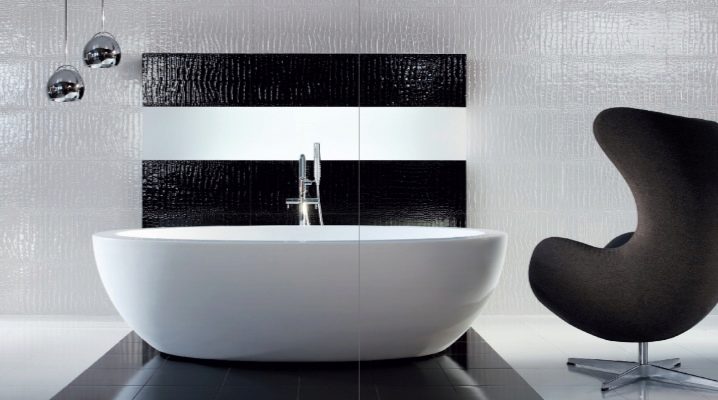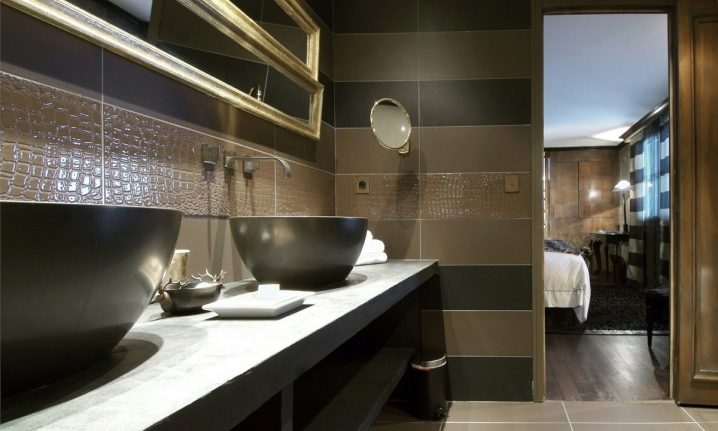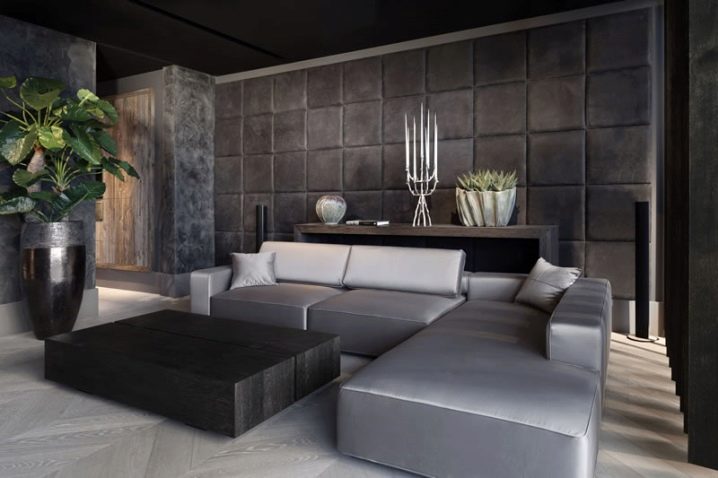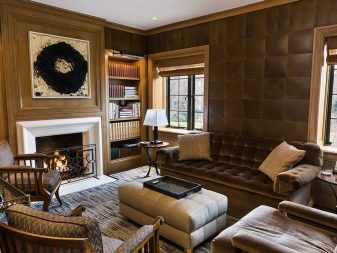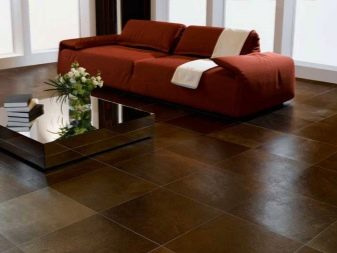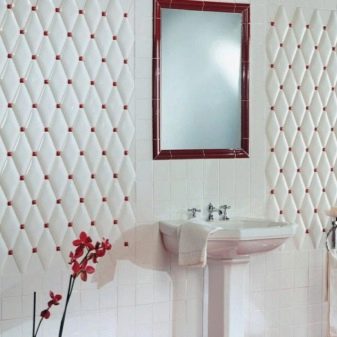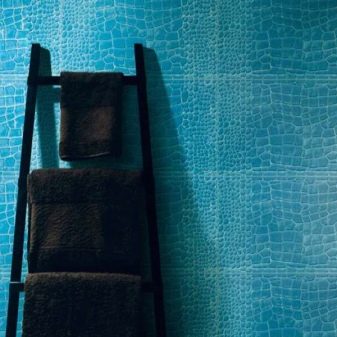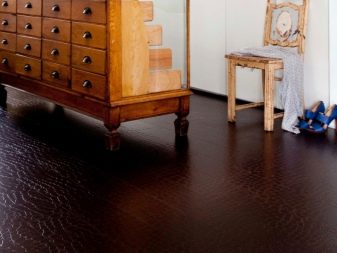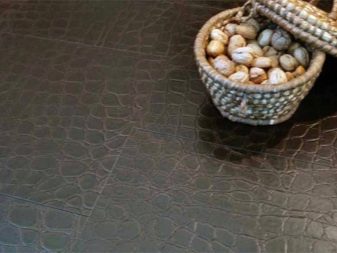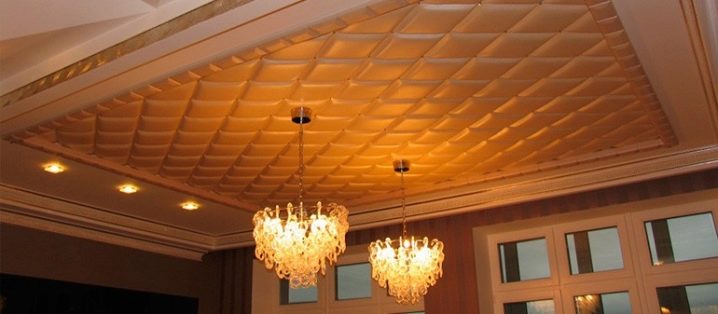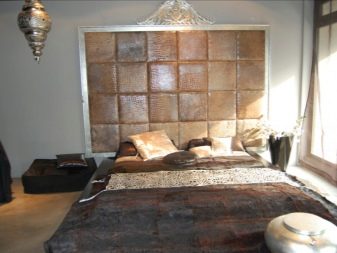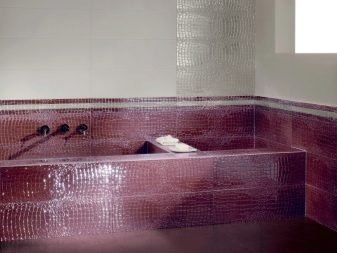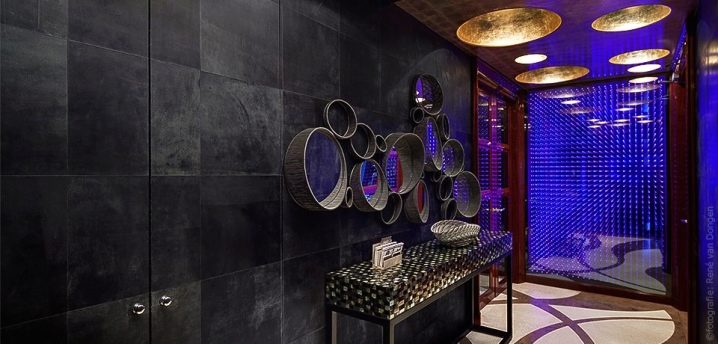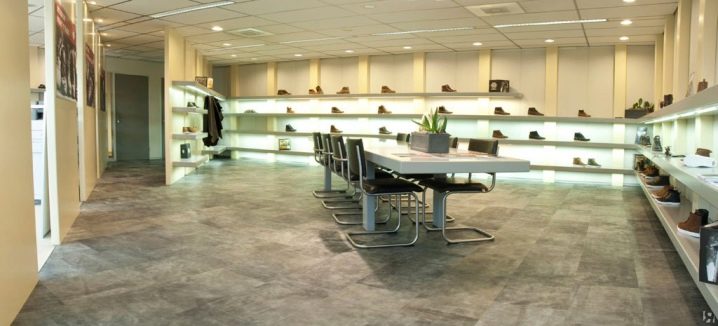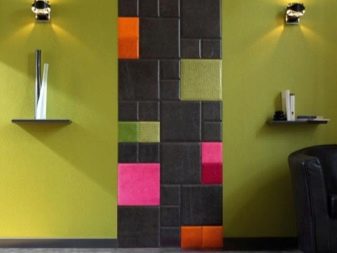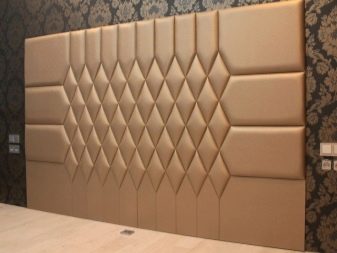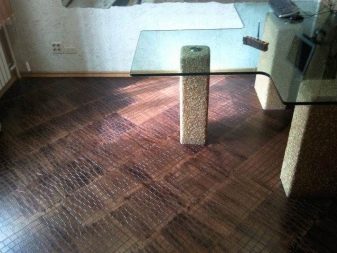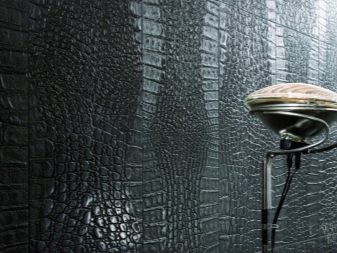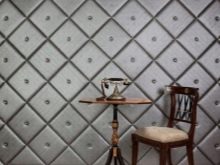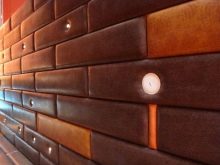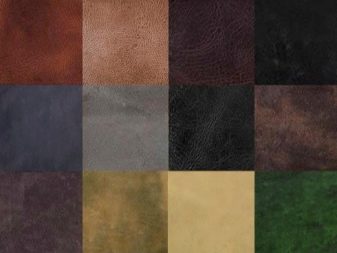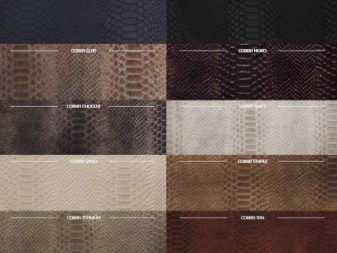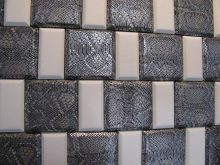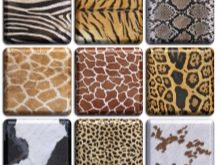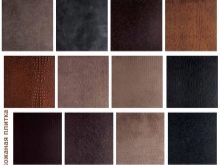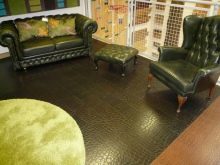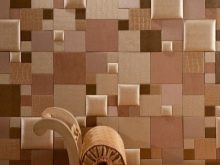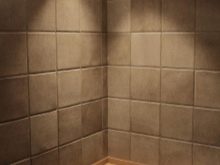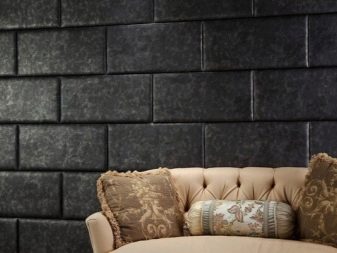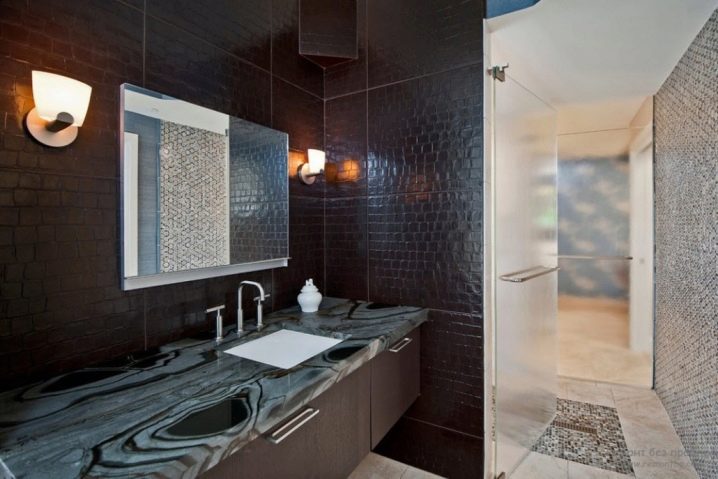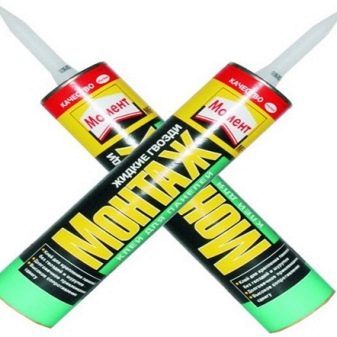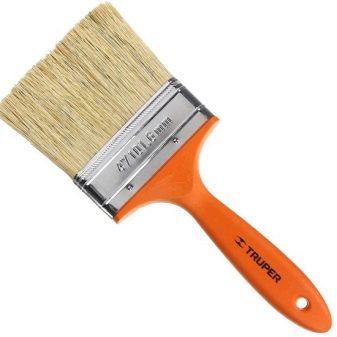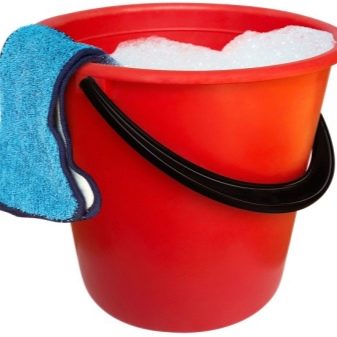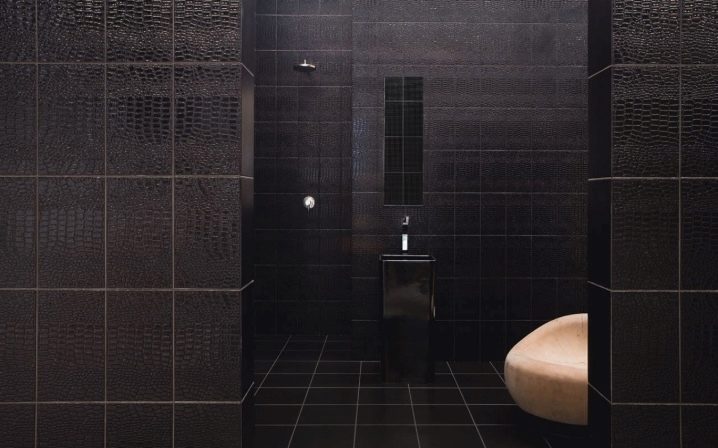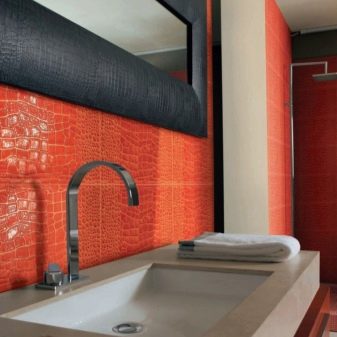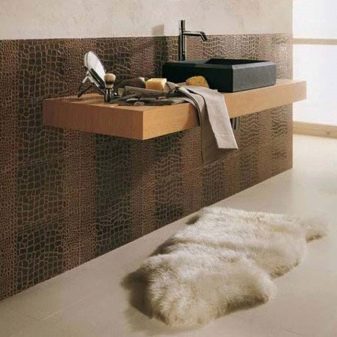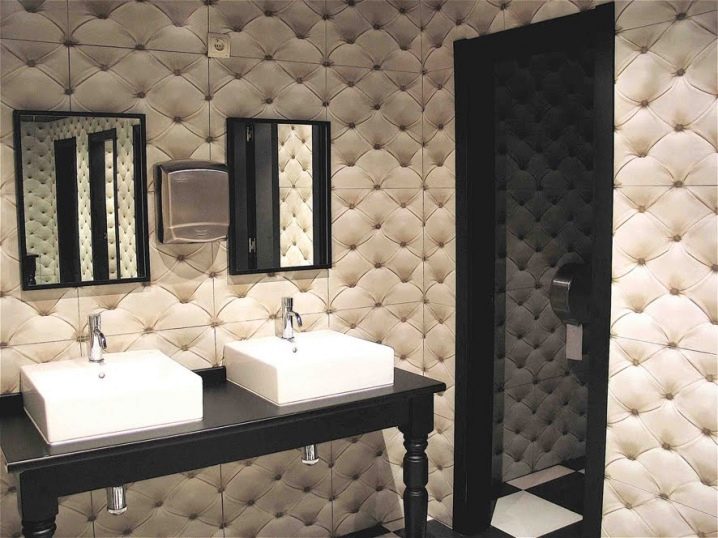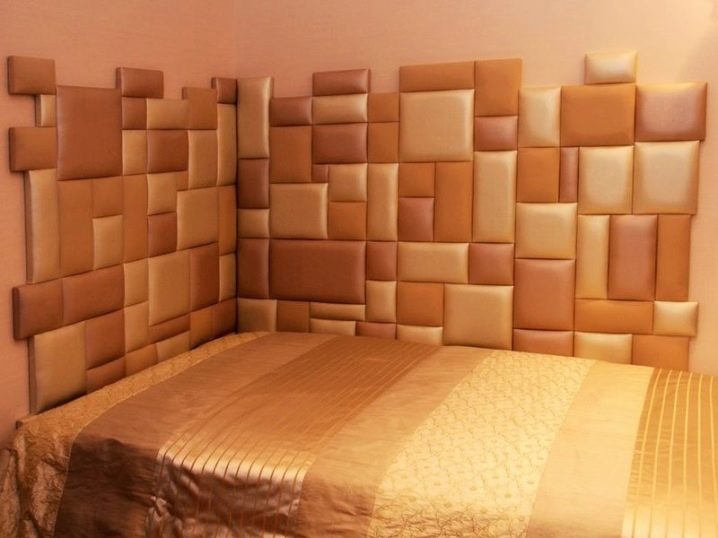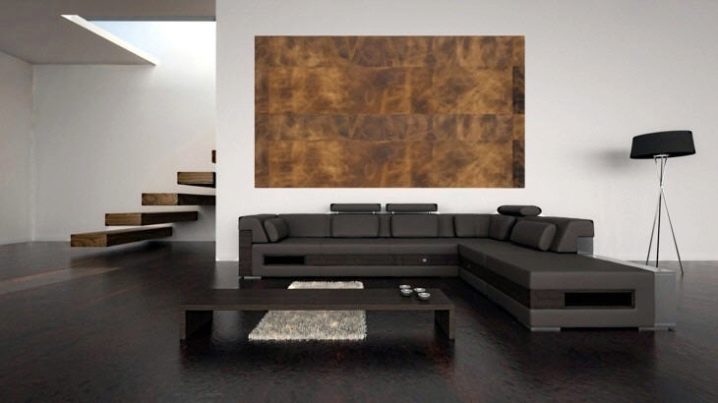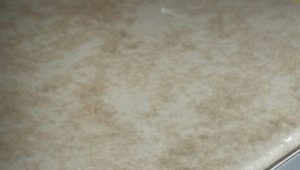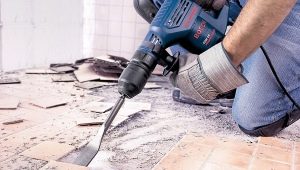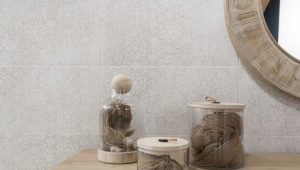Tile under the skin: advantages and disadvantages
From the variety of facing materials leather tile stands out for its originality and aesthetic appearance. This coating fits perfectly in almost any style of interior.
Special features
Leather plates are able to decorate any room. This material has a high quality and has an original appearance.
This model can be laid only on a small area of the surface, and not revet it with walls and floor completely.
Modern manufacturers of tile materials are ready to offer a wide range of leather tiles, which differ not only in surface structure and pattern, but also in shape and size. In addition, many companies are ready to perform on the leather surface of the tile any pattern or pattern to order.
Plates under the skin have a wide range of applications. Typically, this material is used for cladding walls, floor and ceiling.
For the walls are mainly used three-layer leather products with a base of cardboard or cellulose. Wall tiles due to the three-layer structure has a voluminous surface. The volume of the coating gives the middle foam layer. The leather surface of the tile can imitate materials such as metal, wood or fabric.
Two-layer models with a base of porcelain stoneware or ceramic tile are made as a floor covering. Dense wood materials are also used as a base. The bottom layer provides strength and hardness of the coating. If the top layer is made of genuine leather, then manufacturers impregnate it with a special composition, which improves the strength of the coating. A layer of artificial leather is made not less than three millimeters thick.
For cladding ceilings, leather models are used quite rarely, however, manufacturers for such finishing produce the most subtle modifications of tile products.
Leather cover can beautify almost any room. Exceptions are rooms and separate areas with high humidity levels.In them it is appropriate to use only ceramic tiles with imitation under the skin. Since this model is quite expensive, this material is often used to decorate small areas or individual surfaces:
- from the tile you can create a small wall panel;
- leather plates can cover only one wall in the room, thereby emphasizing it;
- decoration of the walls of the cabinet bar;
- leather plates are perfectly combined with wood and natural stone.
In addition to the lining of residential premises, leather tiles can be used for decoration of administrative and public buildings, and even car interiors.
Kinds
The main classification of tile coatings under the skin is based on the types of materials from which the product was made. There are the following types of tiles:
- Genuine leather product. This coating has three layers: the bottom one is a base of cellulose, the middle one is elastic polyurethane foam, the top one is genuine leather. For the production of the most often used skin reptiles or veal option.
- Artificial Leather. It differs from the coating of genuine leather only the top layer, which is made of leatherette.
- Porcelain stoneware leather. The base of the coating is ceramic granite, and the top layer is made of dorsal bovine leather.
- Ceramic tiles under the skin. Such a coating can imitate natural leather due to the special relief and color of the surface, or it can have a top leather layer.
According to the field of application, floor, wall and ceiling coverings are distinguished, which, in turn, have different shapes and sizes. Leather wall cladding tiles are mainly produced in the following format:
- 20x20 square and 30x30 cm:
- rectangle 30x45 cm;
- hexagon with a size of 23x20 cm;
- octagon 20x20 cm;
- wave form 30x14 cm
Floor tiles have a denser base than cellulose. Ceramic tiles with imitation under the skin are actively used as floor coverings. It is produced with the following standard dimensions:
- squares with sides of 45 and 60 cm;
- a rectangle of 60x30 cm
In addition to the shapes and sizes, tiled material under the skin has a variety of textured surfaces. The most popular coating options are:
- Imitation of a zebra. Such tiles perfectly complement the interior design in the African style.
- Imitation under the skin of a tiger or leopard can decorate the interior in ethnic style.
- Chocolate bar.
- The milky-white shade of the surface looks great with a chocolate-colored bar.
- Crocodile skin. This model looks great in the bedroom, living room or in the office.
- Snake skin.
Advantages and disadvantages
Depending on the materials from which the tile was made under the skin, one or another type of coating will have its own advantages and disadvantages. Below are the main advantages of models, the top layer of which is made of genuine or artificial leather:
- Long service life. A high quality tile with proper care can last up to 20 years.
- Health safety. This coating is made only from high quality materials, and as the coloring components are used only ingredients of natural origin.
- High level of sound insulation.
- Good insulation performance.
- Attractive appearance.
- The variety of sizes, shapes, colors and textures.
- Easy styling.
- If any part of the tile is damaged, damaged tiles can be easily replaced.
- Easy to care.
The main disadvantage of models of genuine leather should be attributed to the high cost of tile coating. You can also highlight the following disadvantages of tiles under the skin:
- under the influence of direct sunlight, the surface loses its original appearance;
- moisture and temperature changes can ruin the structure of the tile;
- a peculiar smell from the material that weathered out of the room for quite some time;
- poor mechanical resistance: heavy or sharp objects, as well as pets can ruin the coating.
Ceramic tiles with a textured surface under the skin will not look as impressive as models from natural material. However, such a coating is much cheaper than leather plates.
Installation
The surface before finishing works does not require special preparation: you can stick the leather covering even on the wallpaper. Base under facing material should not have strong irregularities. You also need to clean the surface from contamination.
An adhesive mixture based on PVA or liquid nails is used as an adhesive compound. Glue solution is applied to the base of the tile with a brush. The floor material is fixed in the same way as standard ceramic models or porcelain stoneware.
Care rules
Genuine or artificial leather tile covers should be regularly cleaned from dust.wet cloth or remove dirt from the surface with a vacuum cleaner - thus you can avoid the formation of serious dirt and damage to the coating.
Once in six months, the material from natural leather must be treated with special oils.
The kozhzam tile is cleaned with a solution of water and alcohol in a one-to-one ratio or by means of which ammonia is included. The use of bleach is unacceptable in cases with artificial and genuine leather.
Successful examples in the interior
Ceramic coating with reptile skin imitation.
A small section of the wall can be decorated with a crocodile cover.
Ceramic coating with imitation of quilted leather will decorate both residential and office space. Such material is resistant to moisture, which will allow to use it for facing the bathroom.
Volume ceramic tiles covered with leather.
Wall panels from thin wall finishing material.
A small story from the Alphenberg leather tile factory in the Netherlands, as well as an excerpt from an interview with the head of the company, see the following video.
